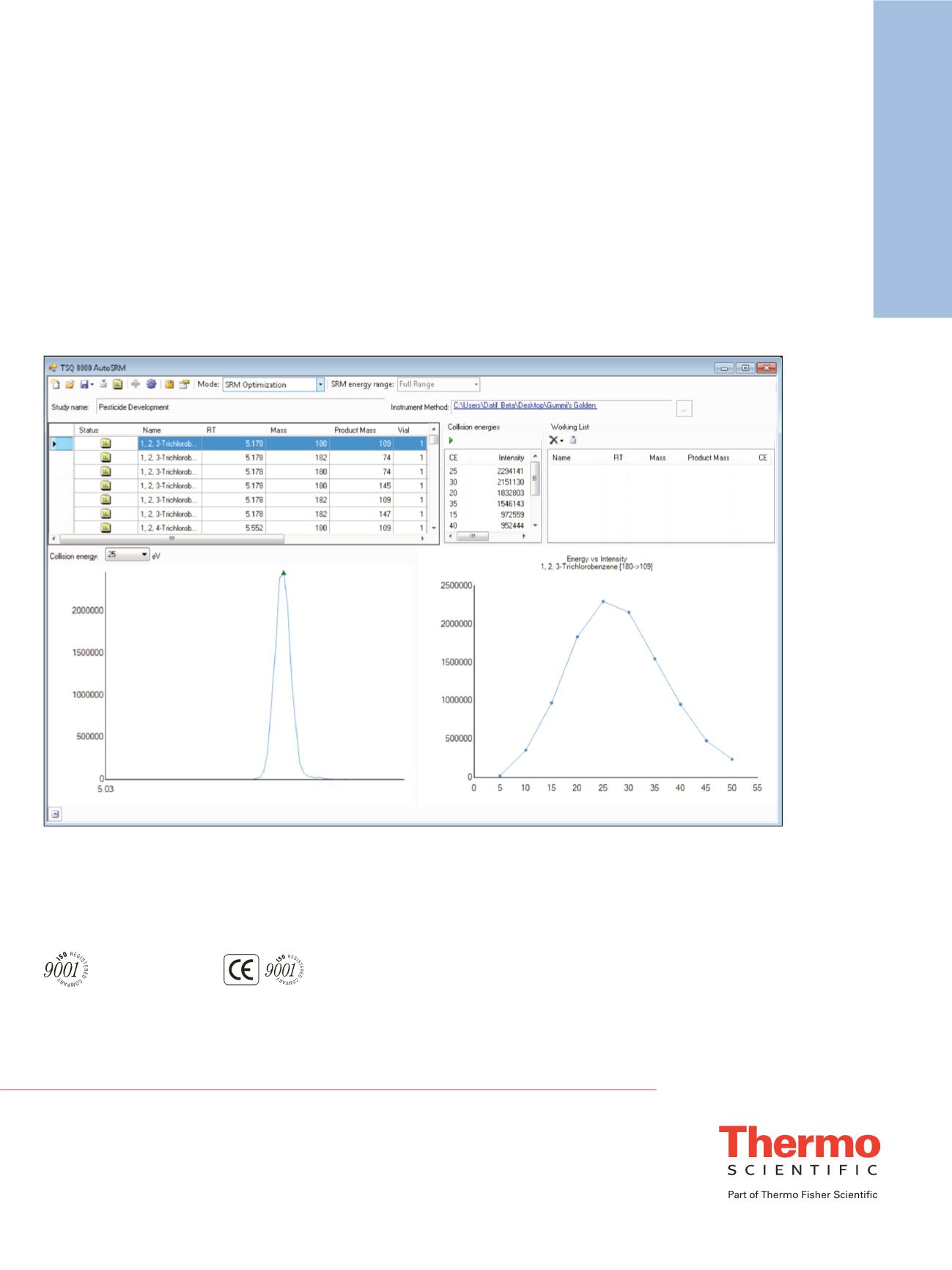
Africa-Other
+27 11 570 1840
Australia
+61 2 8844 9500
Austria
+43 1 333 50 34 0
Belgium
+32 53 73 42 41
Canada
+1 800 530 8447
China
+86 10 8419 3588
Denmark
+45 70 23 62 60
Europe-Other
+43 1 333 50 34 0
Finland /Norway/Sweden
+46 8 556 468 00
France
+33 1 60 92 48 00
Germany
+49 6103 408 1014
India
+91 22 6742 9434
Italy
+39 02 950 591
Japan
+81 45 453 9100
Latin America
+1 608 276 5659
Middle East
+43 1 333 50 34 0
Netherlands
+31 76 579 55 55
South Africa
+27 11 570 1840
Spain
+34 914 845 965
Switzerland
+41 61 716 77 00
UK
+44 1442 233555
USA
+1 800 532 4752
AB52298_E 05/12S
Application Brief 52298
Step 2: Product Ion Study
Now that you have selected your precursor masses, it is
time to find your product masses. AutoSRM will signal
the TSQ 8000 system to acquire product ion scans of your
precursor masses at three collision energies. You are not
required to set up any methods, sequences or data layouts
to accomplish this. AutoSRM automatically takes care of
it. Along with your chromatographic peak and your product
ion spectra, you are presented with a table of the most
intense product ion masses from which to choose. Again,
if you choose, you can have AutoSRM pick for you.
From here you can export your transition list to your
instrument method, or you can send your selected
transitions to an SRM optimization study for further
optimization.
Step 3: SRM Optimization Study
The final step in SRM development is the SRM optimiza-
tion step. Now that you have selected your precursor and
product masses, AutoSRM will acquire those transitions
at multiple collision energies. Because of the fast scanning
capabilities of the TSQ 8000 GC-MS system, three
transitions per compound, each at 10 unique collision
energies, can be analyzed in a single injection. This will
give you a well defined maximum for your collision
energy, as shown in Figure 2 below.
Once complete, AutoSRM allows the simple creation of
the TSQ 8000 instrument method to be ready for routine
analysis.
Figure 2. Collision Energy optimization curve for the
m/z
180 > 109 transition of 1, 2, 3-Tricholobenzene, showing an optimum collision
energy of 25 eV. At this point in the process, the optimized SRM transitions can be exported to your instrument method.
Thermo Fisher Scientific,
San Jose, CA USA is ISO Certified.
thermoscientific.com
©2012 Thermo Fisher Scientific Inc. All rights reserved. ISO is a trademark of the International Standards Organization. All other trademarks are the property of
Thermo Fisher Scientific Inc. and its subsidiaries. This information is presented as an example of the capabilities of Thermo Fisher Scientific Inc. products. It is
not intended to encourage use of these products in any manners that might infringe the intellectual property rights of others. Specifications, terms and pricing
are subject to change. Not all products are available in all countries. Please consult your local sales representative for details.
Thermo Fisher
Scientific,Austin,TX
USA is ISO Certified.


